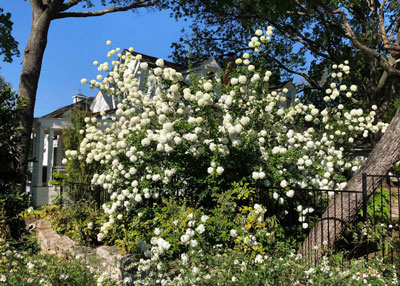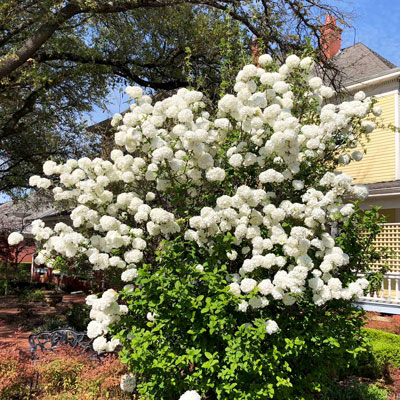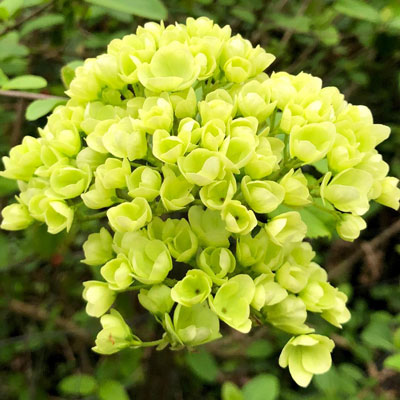Chinese snowball
Senior horticulturist Steve Huddleston of the Fort Worth Botanic Garden told us all about this plant last Sunday in his weekly report on my program on WBAP.
Unfortunately, the gardens there are shut due to Covid-19, so you can’t go in to see them. I told Steve that in honor of him I’d let it be my Plant of the Week here this week, so we both hope you enjoy it.

If you’re looking for a spring-blooming shrub that will bowl you over with its huge flower clusters, put this one at the top of your list. They don’t make ‘em any prettier!
The odd thing about Chinese snowballs is that you don’t see them used in Texas landscapes very often. You don’t even see them in retail nurseries very often. (Probably because I buy every one that I see.)
I use mine scattered through our woodland landscape mixed in with our evergreen hollies and setting off the Japanese maples, redbuds and oakleaf hydrangeas. It’s all part of the package you find yourself putting together when all you have is shade.

The particulars you’ll need to know…
• Chinese snowball viburnum
• Viburnum macrocephalum
• Large deciduous shrub to 8-12 ft. tall and 8-10 ft. wide
• Softball-sized flowers start out lime-green, then change to pure white.
• Grows well in part sun to a good bit of shade.
• Grows best in highly organic soil that is kept evenly moist.
• Fall color is not especially showy.
• Winter hardy through all of Texas (adapted Zones 6-9).

